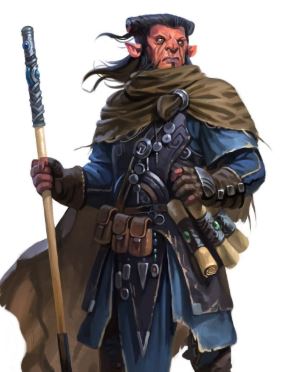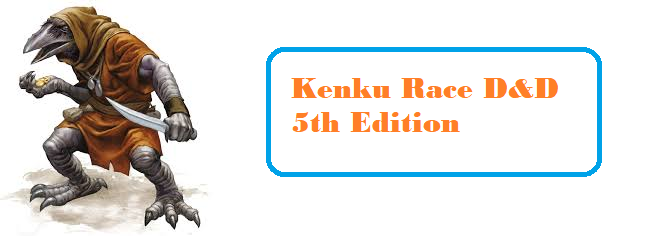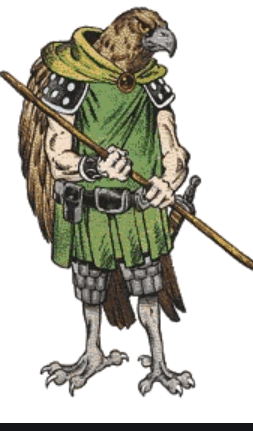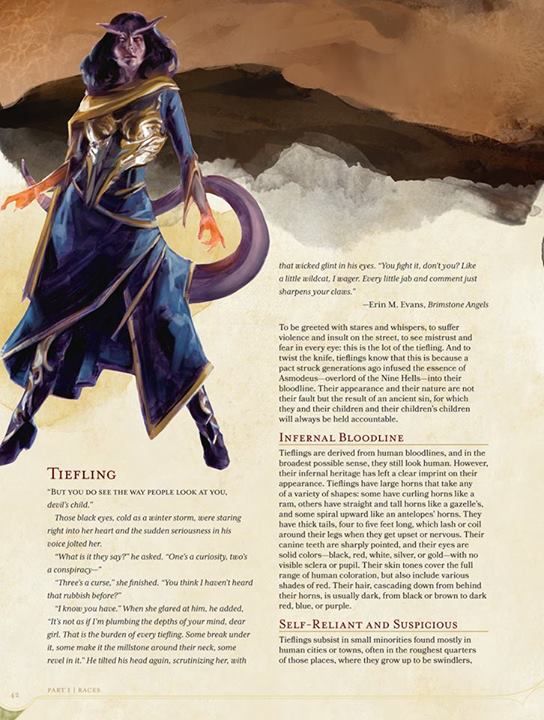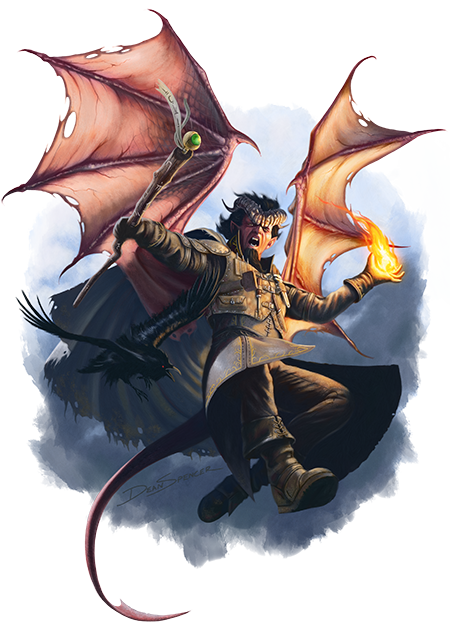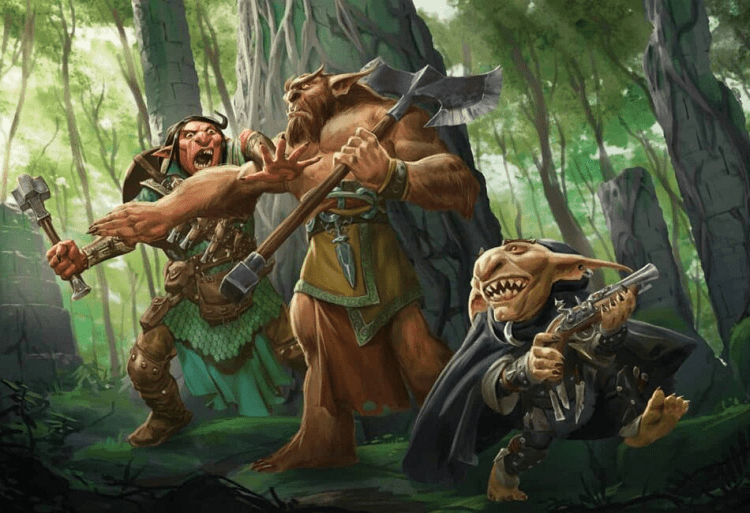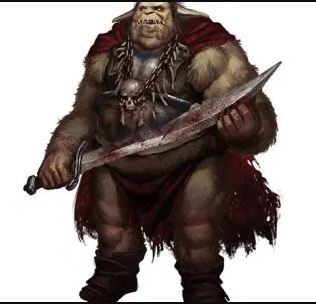Owlin is a playable race that was introduced in the Dungeons & Dragons 5th Edition (5e) sourcebook, Fizban’s Treasury of Dragons. Owlin are a race of small, owl-like humanoids that are known for their wisdom and their ability to fly. They are typically found in forests and woodlands, where they live in small communities. Owlin are a wise and intelligent race, and they are often found in positions of leadership in their communities. They are also skilled hunters and scouts, and their keen senses make them ideal for tracking prey or scouting out danger.
Few of the many races that are playable in Dungeons & Dragons have a speedy fly. It is equivalent to their pace of walking at the beginning of the game. It is for those who tend to help Masters of Dungeon to wince because flying allows for freedom for players. One of the fortunate few races with a natural knack for flight is the Owlin, which was first encountered in Strixhaven: A Curriculum of Chaos. This has significant benefits for the character of the player.
Although this event is a nice addition, it is not without criticism. This essay will cover how to play the character of an Owlin in your upcoming campaign and will also touch on the merits of this race in general.
Playing as an Owlin is an ideal place to begin if you’ve ever wanted to soar over the night sky like an owl. The Owlin has a lot to offer for gamers looking for something unusual, whether the character inclines to prefer the nighttime or the sheer concept of flying into fight counter to worthy rivals.
For all of you out there yearning for a flight speed, we finally have a new official playable race that can properly compete against the Aarakocra. Although this event is a nice addition, it is not without criticism. This essay will cover how to play an Owlin in your upcoming campaign and will also touch on the merits of this race in general.
What is Owlin 5e in DnD Races?
The Giant Owls of the Feywild is a detached relative of the Owlins, according to lore. Giant Owls have a reputation for being vicious guardians of the creatures group named Fey and they serve and befriend, which may be one reason why Owlins themselves create great traveling companions. They look like humans and have arms and limbs, but that’s about where the resemblances end. Owlins have annexes on the backbones of their shoulders that let them fly and are covered with feathers. If they fit under the tiny or medium range, owlins that can be almost any size. They typically live for about a century, which is like other humanoids. as well as you can read the dnd races‘ official guide.
Owlin have a number of unique racial traits that make them stand out from other races in D&D 5e. These traits include:
- Flight: Owlin has a flying speed of 30 feet.
- Keen Sight: Owlin has an advantage on perception checks that rely on sight.
- Owl Eyes: Owlin can see in dim light within 60 feet of them as if it were bright light, and in darkness as if it were dim light. They can’t discern color in darkness, only shades of gray.
- Silent Flight: Owlin can fly without making noise.
- Talons: Owlin have a natural weapon, their talons. When they are hit with an unarmed strike, they deal 1d4 slashing damage.
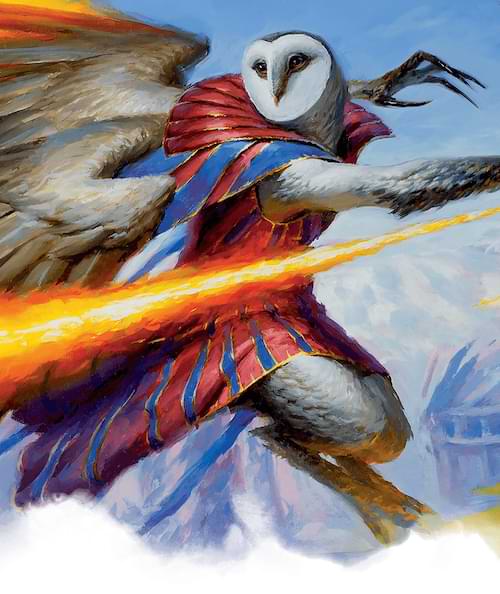
Origin of Owlin
Due to Wizards of the Coast’s ambition to cross-promote the tabletop D&D experience with its linchpin intellectual property, Magic: the Gathering, Owlins were first introduced to the universe of Dungeons & Dragons.
The owlins entered the world of fantasy through the Magic: the Gathering set known as “Strixhaven: School of Mages,” or just “Strixhaven,” ignoring generalizations about the numerous species of avian humanoids known collectively as the “aven” from the past. On April 23, 2021, the Strixhaven set debuted at game stores and big-box stores. There are seven monster cards from this specific game expansion that prominently display owlins, one of the new races that were added with it.
When Did The Owlin in D&D become enlisted in Race?
On December 7th, 2021 When “Strixhaven: A Curriculum of Chaos” was published on December 7th, 2021, it introduced the Owlin as the only new racial inclusion for player characters and gave players the opportunity to experience the magical collegiate experience across numerous gaming realms. When you consider that the term “Strixhaven” effectively translates to “owl home,” the idea that an owl race was associated with this environment makes much more sense.
Defining Race
In a nutshell, owlins are owl-people with arms, legs, and wings that sprout from their feathery bodies’ backs and shoulders. Even though owls are nocturnal animals, owlin artwork from Magic: The Gathering and Dungeons & Dragons depict them as active during the day as they are at night, enabling the player to decide whether a particular owlfolk character is nocturnal or diurnal.
There are two divisions in the lore surrounding this race.
- Dungeons & Dragons
According to Dungeons & Dragons, although this race is distantly connected to the giant owls of the Feywild, there is still a significant deal of variance in each owlin’s appearance.
- Magic – the Gathering
Owlins consider Archavios, the plane on which Strixhaven is situated, to be their home realm in Magic: the Gathering. After learning everything they can at home, some Owlins will research ways to get to other planes to advance their studies and gain a better understanding of magic and the multiverse.

Owlin Abilities
- Smooth Glide of Owlin
Owlins can glide swiftly and stealthily above because of the lovely wings that sprout from their shoulders, but only when they’re on the cover of negligible or no armor. Their walking pace, which is 30 feet per second, is also their flying speed. They are natural for furtive actions thanks to the way their feathers mute their movements.
As a result, they are adept at using stealth, which is useful for classes like rogue and ranger since they both rely significantly on it to transmit out their operations.
- Better darkvision
Additionally, owlins have better darkvision. Owlins can perceive darkness as well as weak light up to 120 feet, but Owlin can only distinguish between colors that are different degrees of gray. Owlins have the option to choose which core numbers they want to improve, different many other competitions that offer specific ability score improvements at character creation.
Owlins can boost one stat core by +2 and a stat second by +1, therefore they complement almost any session because the stats may be tailored to fit the difficulties of the stat necessities of the class.
Owlin Names in DnD
Since there are currently no authorized naming guidelines for characters of Owlin, players are free to get inventive and may even come up with their own naming scheme. The names Talon or Night Eye may have originated from the physical characteristics of the Owlins’ forefathers, who may have always called their offspring after their illustrious forebears. This is one of the ideal times to use even more creativity in character development and provide them with a memorable name.
Why Owlin is played as DnD?
The Owlin is, most importantly, a remarkably adaptable race that fits nicely into just about any class of player. They also possess a Fey-like quality, which helps them as fascinating as they are cute. The feat Touched Fey, which provides access to the Misty Step spell, an added +1 stat extra to Wisdom, Charisma, or Astuteness, and one first standard invocation from the institute of fascination or divination makes it even easier for them to improve their abilities because of their long-standing connections to the Feywild.
Conclusion
Additionally, to their adaptability, they have a faster speed of flying. This will provide them an advantage in tasks like studying the battleground and scouting from a vantage opinion others can’t reach, as well as make it simpler for them to flee from opponents as they fly higher and far away from hazardous battle situations.
These players will find it much simpler to conduct reconnaissance and survey missions, account back to their group, and avoid being discovered by the rival because of their ability to adapt to stealth.
FAQs
Q: What is owlin?
Owlin are a race of small, owl-like humanoids that are known for their wisdom and their ability to fly. They are typically found in forests and woodlands, where they live in small communities.
Q: What are the racial traits of owlin?
Owlin have a number of unique racial traits, including:
- Flight: Owlin have a flying speed of 30 feet.
- Keen Sight: Owlin have advantage on perception checks that rely on sight.
- Owl Eyes: Owlin can see in dim light within 60 feet of them as if it were bright light, and in darkness as if it were dim light. They can’t discern color in darkness, only shades of gray.
- Silent Flight: Owlin can fly without making noise.
- Talons: Owlin have a natural weapon, their talons. When they hit with an unarmed strike, they deal 1d4 slashing damage.
Q: What classes are owlin good at?
Owlin can be played as any class, but they are particularly well-suited for classes that benefit from their flying ability and keen sight, such as rangers, rogues, and druids.
Q: What are some tips for playing an owlin character?
Here are some tips for playing an owlin character:
- Use your flying ability to your advantage. You can fly over obstacles and reach places that other characters can’t.
- Use your keen sight to spot danger before it’s too late. You can also use it to track prey or read maps.
- Use your owl eyes to see in the dark. This can be a huge advantage in combat or when exploring dark places.
- Use your silent flight ability to sneak up on enemies or to avoid being detected.
- Use your talons as a natural weapon in combat. They can be just as effective as a dagger or other simple weapon.
Q: What are some challenges of playing an owlin character?
One challenge of playing an owlin character is that they are a relatively new race, so there is not as much information about them as there is for some of the other races in D&D 5e. This can make it difficult to come up with a backstory or to know how to play your character in certain situations.
Q: An Owlin can only be so old.
A: Lifespan. Like other humanoid player character races, owlins have a lifespan of about a century without using magic to prolong it or pursue undeath. Movement. This race’s walking speed is 30 feet, which also affects his owlin’s capacity for flight.
Q: What dialects does Owlin speak?
Owlin is Auran speaker who frequently learns new languages depending on their environment.
Q: Is the Owlin race playable?
The playable race known as the Owlin is one of the most intriguing new player options in Strixhaven: A Curriculum of Chaos. One of the few races that have a natural flying speed, the Owlfolk race is a fun, fresh option.

Hi! this is sheryas iyar,
I am not a “gamer boy”. I am a gamer. I play video games. I don’t take slutty pictures while holding a controller.

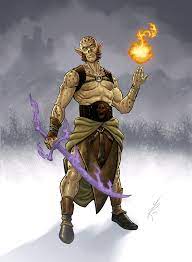

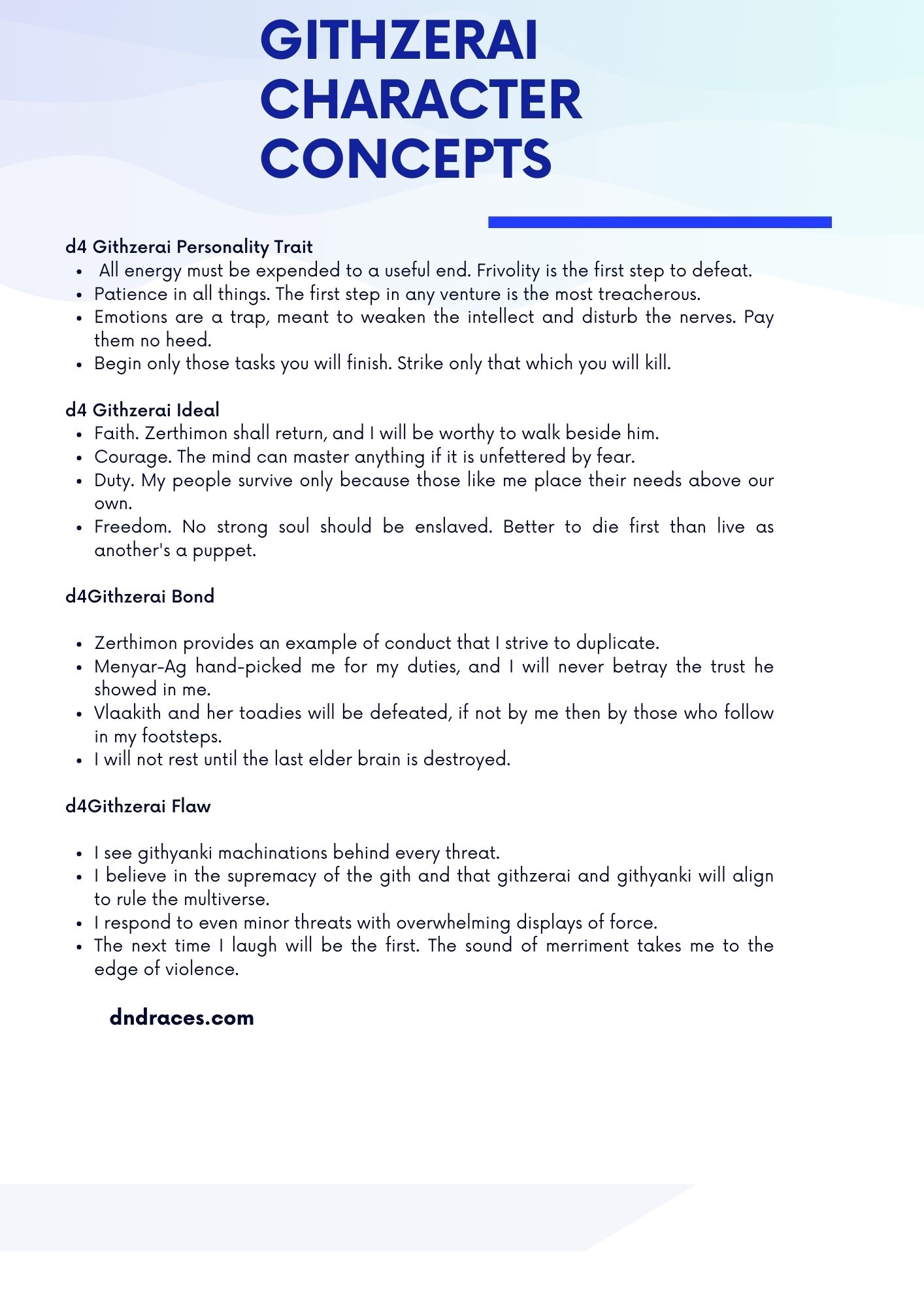
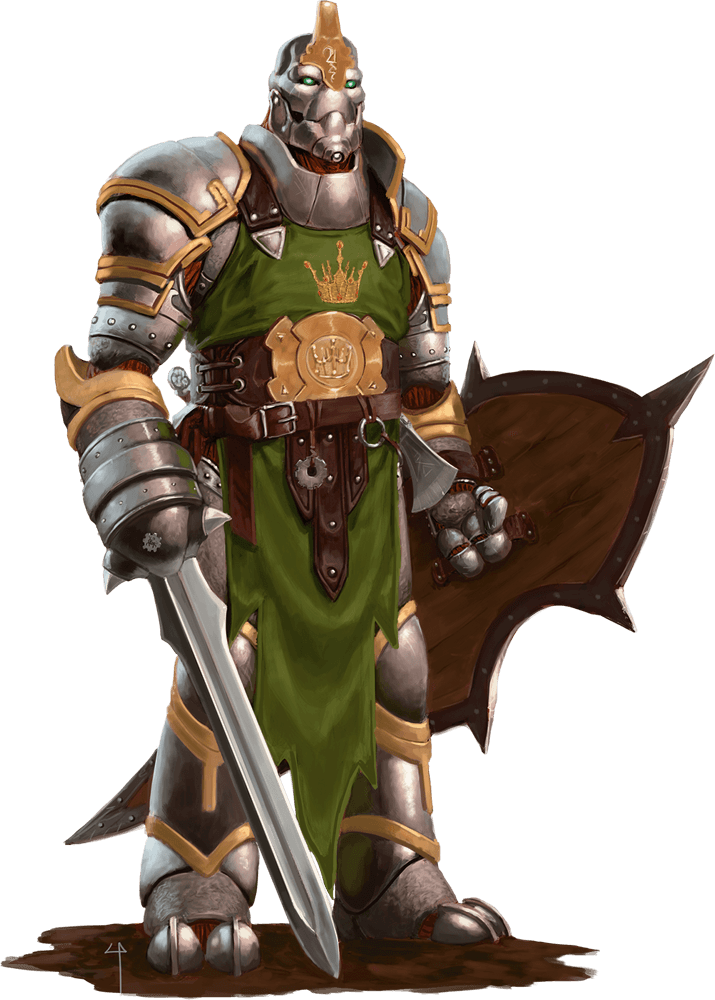




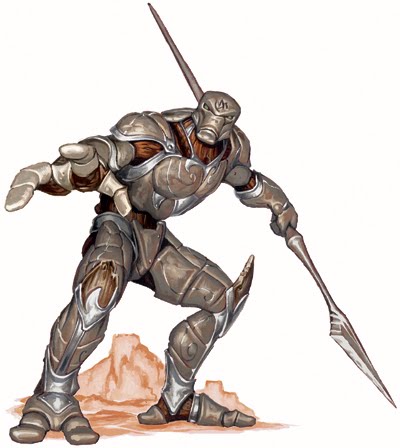
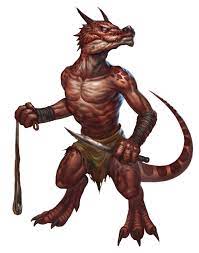
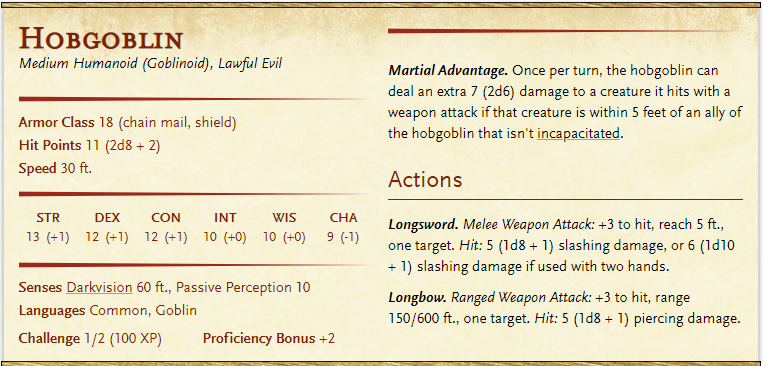
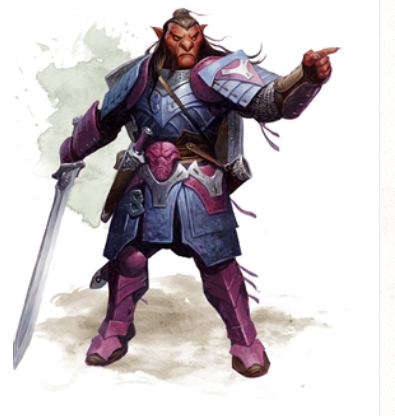 The historical backdrop of hobgoblins shifts broadly with different fables customs having their unmistakable adaptations, here and there seen as destructive animals while on different occasions as well disposed of aides, making it extremely complex to adhere to a solitary hypothesis.
The historical backdrop of hobgoblins shifts broadly with different fables customs having their unmistakable adaptations, here and there seen as destructive animals while on different occasions as well disposed of aides, making it extremely complex to adhere to a solitary hypothesis.